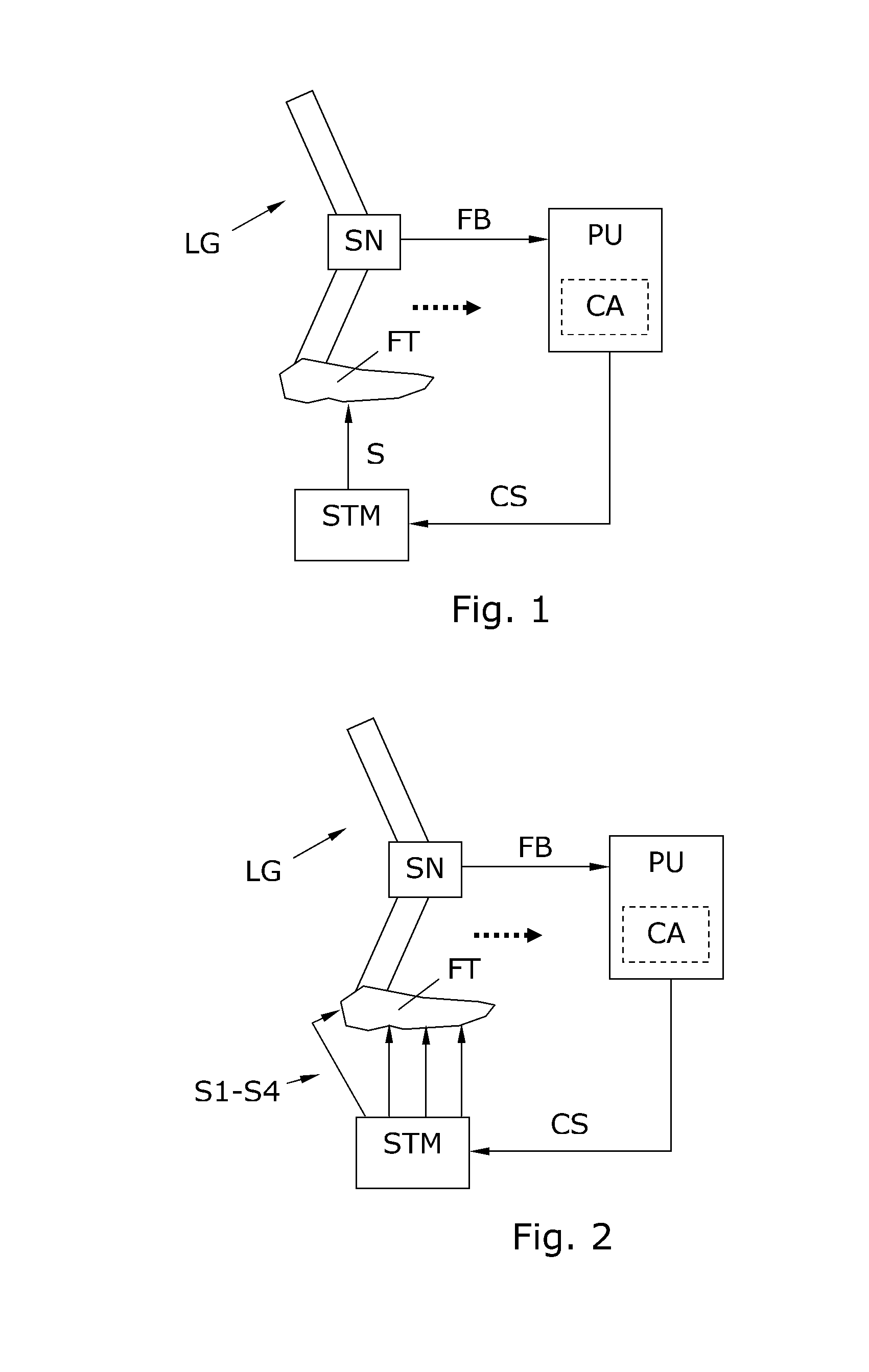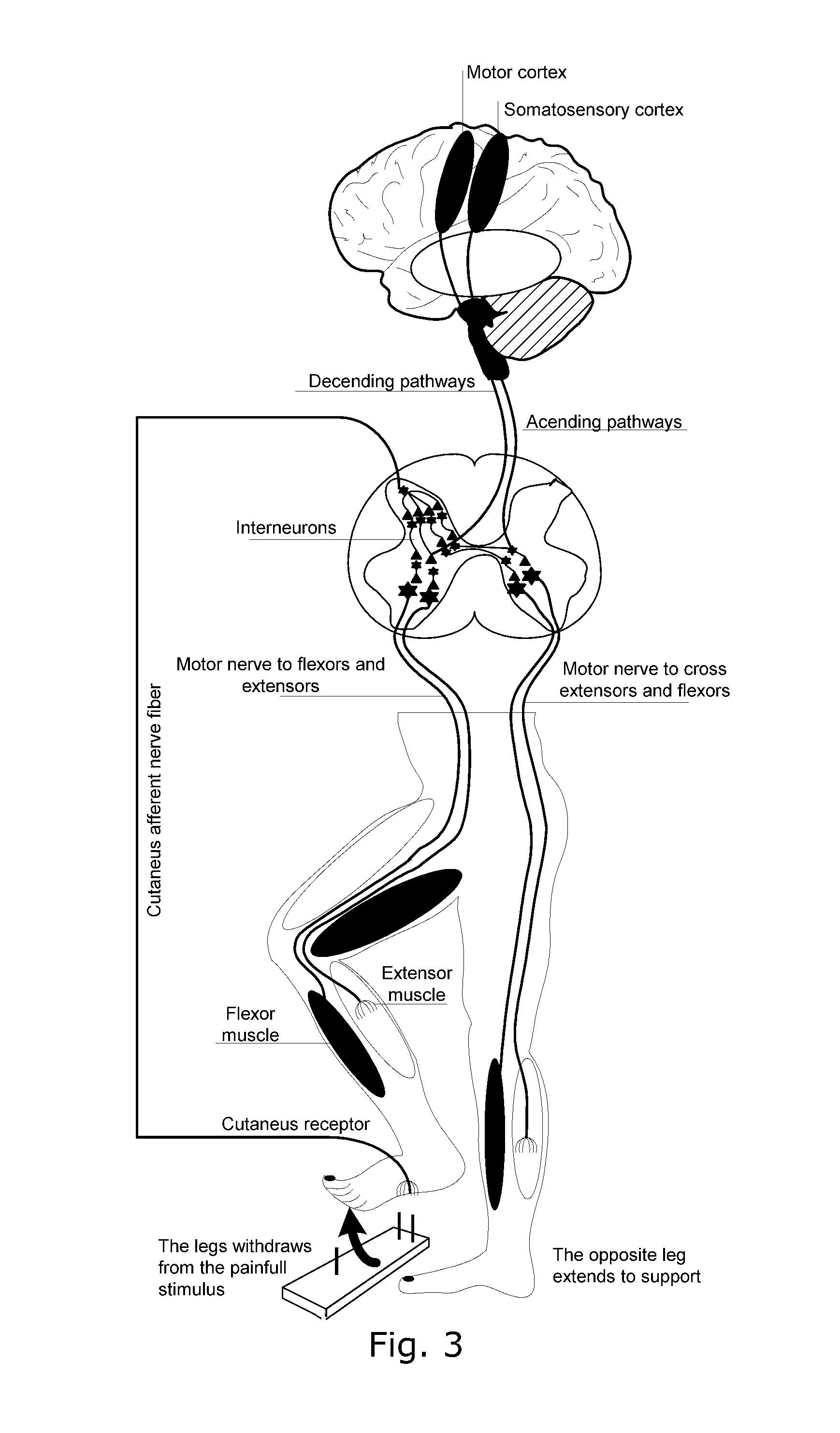Method and device for reflex-based functional gait training
a functional gait and reflex-based technology, applied in the field of functional electrical therapy, can solve the problems of difficult lifting of the leg by flexing the hip in the swing phase, difficult to mount and take off in relation to daily physiotherapy, and difficulty in patient gait training, so as to achieve convenient mounting and taking off and efficient practical therapy
- Summary
- Abstract
- Description
- Claims
- Application Information
AI Technical Summary
Benefits of technology
Problems solved by technology
Method used
Image
Examples
Embodiment Construction
[0034]FIG. 1 shows schematically the leg LG and foot FT of a person together with basic parts of a therapy device embodiment according to the invention. The device includes a stimulator STM arranged to apply a stimulation S on the foot FT with the purpose of provoking the person's withdrawal reflex, thus causing the leg LG to move and thus initiate swing phase. Such stimulation S of course requires an intensity to trigger the withdrawal reflex, and typically the required intensity is perceived as less pleasant. The stimulator STM is controlled in response to a control signal CS generated by a processor unit PU which runs a control algorithm CA. This control algorithm CA calculated the control signal CS in response to a feedback signal FB which the processor unit PU receives from a sensor SN which is arranged to sense a parameter, e.g. acceleration of the leg LG, here illustrated as a goniometer sensing the knee angle, and generates the feedback signal FB according to this parameter....
PUM
 Login to View More
Login to View More Abstract
Description
Claims
Application Information
 Login to View More
Login to View More - R&D
- Intellectual Property
- Life Sciences
- Materials
- Tech Scout
- Unparalleled Data Quality
- Higher Quality Content
- 60% Fewer Hallucinations
Browse by: Latest US Patents, China's latest patents, Technical Efficacy Thesaurus, Application Domain, Technology Topic, Popular Technical Reports.
© 2025 PatSnap. All rights reserved.Legal|Privacy policy|Modern Slavery Act Transparency Statement|Sitemap|About US| Contact US: help@patsnap.com



